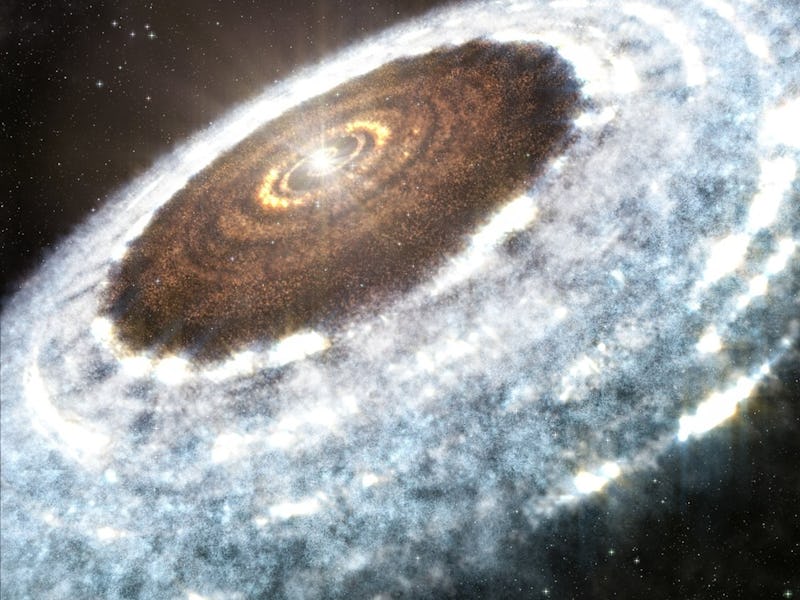Mysteries of the solar system lie within ancient asteroids
This new study is the first hard evidence of water on asteroids, resolving a mystery of the solar system.

Some 30 years ago, a meteorite hit the desert oasis of Tamanrasset Province in Algeria. The Acfer 094 meteorite was tiny — just 82 grams — but it was mighty in another way. At its rocky core, it held ancient knowledge of our solar system’s beginnings.
The meteorite is older than Earth, dating to 4.6 billion years ago. At that time, our solar system was forming from the cosmos. That means the same material that makes up our solar system’s planets is also within the parent asteroid that this meteorite came from.
By examining fragments of Acfer 094, a team of scientists discovered fossilized ice, confirming that these ancient asteroids contained frozen water in their matrix.
The study, published in the journal Science Advances this week, offers an unprecedented look at the makeup of a meteorite. It is the first hard evidence of water on asteroids.
The researchers found microscopic pockets, or tiny holes created by the melting ice water, within the grains of rock that forms meteorite Acfer 094.
Previously, scientists thought that asteroids were too hot to contain ice water. But more recent NASA observations suggested that water may indeed have flowed within these ancient bodies at some point in the early Universe. The new study confirms that finding.
A close-up of the fossil ice on meteorite Acfer 094.
“The matrix of these meteorites is therefore thought to be the starting material from which all the planets formed,” Epifanio Vaccaro, Curator of Petrology at London’s Museum of Natural History, said in a statement.
As our solar system was being formed, a cloud of gas and dust around the Sun flattened out to form a spinning disk of interstellar material. Clumps of material smashed into each other, forming larger structures. Some of these structures were lucky enough to grow into planets or dwarf planets, gaining their spherical shapes through gravitational pull. The rest of these structures became asteroids.
As planets formed, their cores became hot, melting the material from which they were made. “When this happens, all the starting material that we had in the protoplanetary disk is gone as it went through the process of melting and recrystalisation,” Vaccaro said in the statement.
But it is not lost forever: That same material is preserved in asteroids.
“This means that if we want to understand what the dust was like as the solar system formed, we need to go back and grab some of the material that didn’t go through this differentiation process,” Vaccaro said. “In some meteorites, we have that starting material preserved.”
The findings also shed light on where the water found on Earth today originated.
Some suspect that frozen water on ancient asteroids may have fed the early Earth, providing at least part of the water that fills our seas and oceans. Because the Earth was made of the same material as asteroids, then it is likely that its early planetary body contained frozen water.
“By studying these meteorites, it helps us understand the Earth,” Vaccaro said.